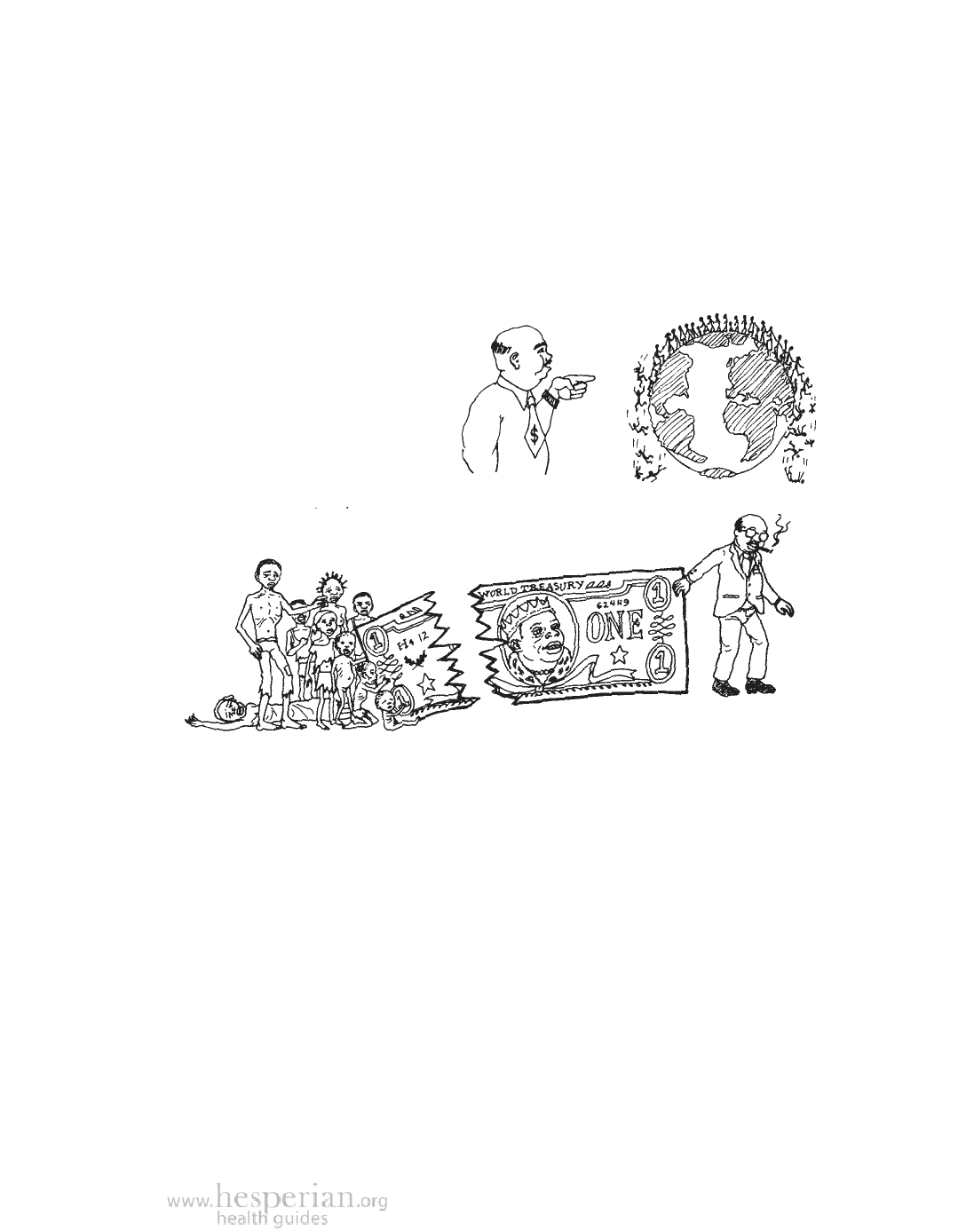
Inequalit y: Cause and Effec t of Environmental Health Problems
23
Too many people, too few resources?
The amount of water, trees, minerals, and other natural resources on Earth is
limited, while the number of people using these resources is growing rapidly.
But the number of people is not the real problem. The problem is how these
natural resources are distributed and used. Any time one person or a group
of people uses more than their fair share of resources, or causes an excess of
pollution, this imbalance can lead to environmental health problems for others.
The rich man’s explanation of
poverty and environmental
destruction: Too many people,
too little land and resources.
The poor people’s explanation
of poverty and environmental
destruction: Unfair distribution
of land and resources, too much
in the hands of too few.
Some people believe the best way to prevent harm to our environment is to
reduce the number of people. This way of thinking leads to ‘population control’
programs. These programs have failed to improve the lives of people anywhere
because they do not address the root causes of environmental destruction,
poverty, and poor health. When families have the resources they need to live
with health and dignity, many choose to have fewer children. Only when
communities, governments, and development programs plan for the survival of
children, and the improvement of the social, political, and economic status of
women, will the so-called “population problem” be solved.
But reducing the number of people in the world will not address the problem
of the unequal use of resources. The best way to reduce the harmful effect
people have on the environment is for the rich to use fewer resources, and to
use them in a way that conserves resources for the future and does not create
an excess of pollution. By first changing the behavior of those who use the most,
we can begin to make sure there will be enough for a healthy life for everyone.
A Community Guide to Environmental Health 2012